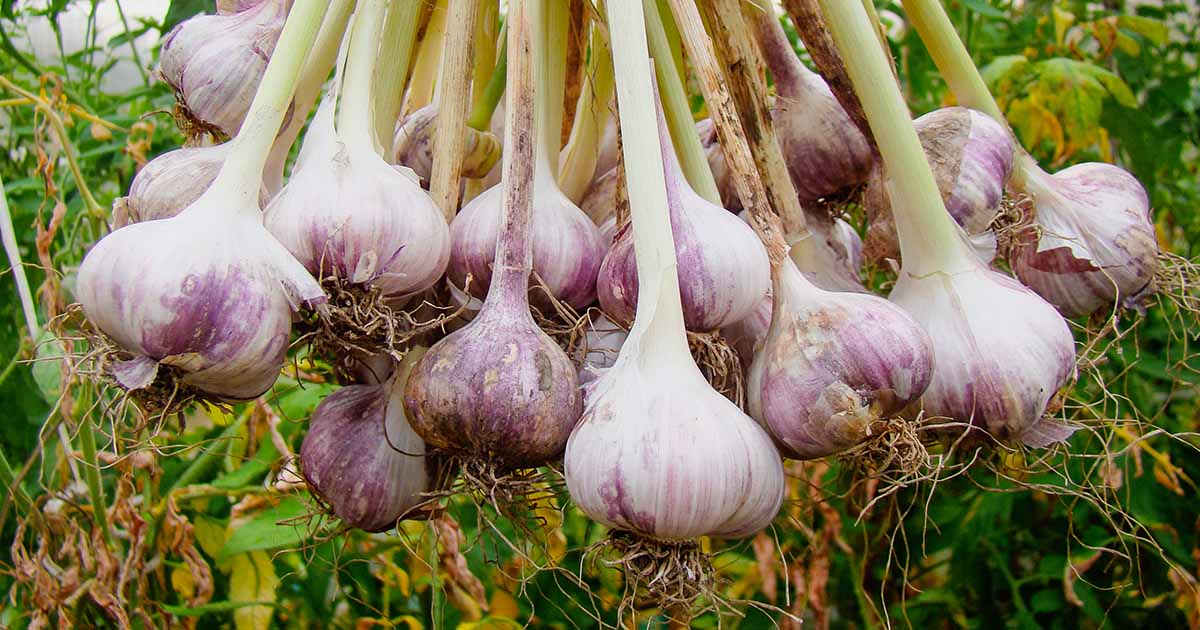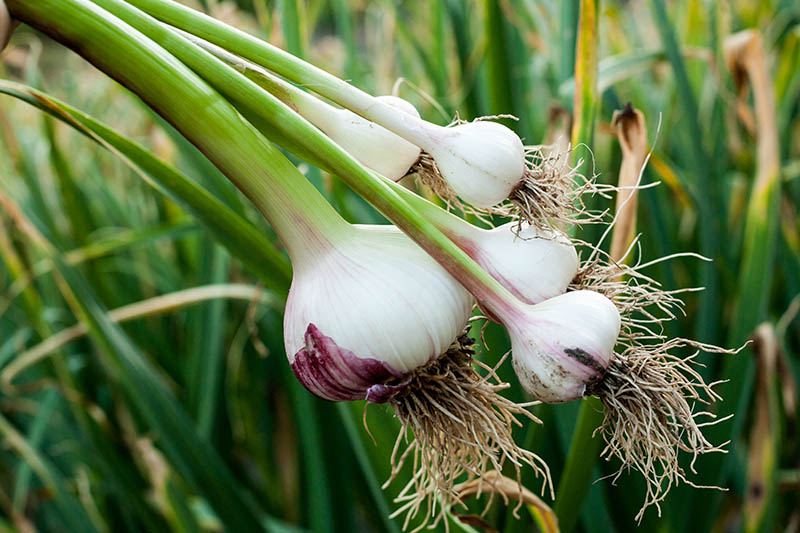Onions And Garlic: The Perfect Companion Planting
Onions and garlic are two of the most popular vegetables in the world, and for good reason. They're delicious, versatile, and relatively easy to grow. But did you know that they can also be beneficial to each other when they're planted together?
That's right, onions and garlic are considered to be companion plants, which means that they can help each other to grow better. In this blog post, we'll take a closer look at the benefits of companion planting onions and garlic, and we'll provide some tips on how to do it successfully.
Benefits of Companion Planting Onions and Garlic
There are several reasons why onions and garlic are considered to be good companion plants. First, they have different root systems. Onions have a long, taproot that grows deep into the soil, while garlic has a shallower, more fibrous root system. This means that they don't compete for water or nutrients.
Second, onions and garlic release different chemicals into the soil. Onions release sulfur compounds, which can help to repel pests and diseases. Garlic releases allicin, which has similar properties. This means that planting onions and garlic together can help to protect your other plants from pests and diseases.
Third, onions and garlic can actually improve the flavor of each other. When they're planted together, they can cross-pollinate, which can result in onions that have a stronger flavor and garlic that has a milder flavor.
How to Companion Plant Onions and Garlic
To companion plant onions and garlic, you'll need to choose the right location. Both onions and garlic prefer full sun, but they can also tolerate partial shade. The soil should be well-drained and fertile.
When planting onions and garlic, space them about 6 inches apart. You can plant them in rows or in a single bed. If you're planting them in rows, make sure to leave about 12 inches between rows.
Once your onions and garlic are planted, you'll need to water them regularly. They should be watered deeply, but not too often. Overwatering can cause the bulbs to rot.
You'll also need to fertilize your onions and garlic regularly. Use a balanced fertilizer, such as a 10-10-10 fertilizer. Fertilize them every 4-6 weeks throughout the growing season.
Pests and Diseases
Onions and garlic are relatively resistant to pests and diseases. However, they can be susceptible to aphids, slugs, and root rot. If you see any pests or diseases, treat them immediately.
Harvesting
Onions and garlic can be harvested when the bulbs are mature. Onions are ready to harvest when the tops start to fall over. Garlic is ready to harvest when the leaves start to turn brown.
Once you've harvested your onions and garlic, store them in a cool, dry place. They should keep for several months.
Conclusion
Onions and garlic are a great companion planting combination. They can help each other to grow better, and they can also improve the flavor of each other. If you're looking for a way to improve your vegetable garden, consider companion planting onions and garlic.
Onions and garlic are two common vegetables that are often planted together in gardens. While they may seem like an odd combination, these two plants actually benefit from being grown in close proximity. Garlic's strong scent helps to repel pests that can damage onions, and onions' shallow roots help to aerate the soil around garlic, which can improve its growth.
If you're thinking about planting onions and garlic together in your garden, I recommend visiting Gardenia Inspiration for more information. This website has a wealth of resources on companion planting, including a detailed guide to planting onions and garlic together. You can also find tips on how to prepare the soil, plant the bulbs, and care for your plants throughout the growing season.
FAQ of onions and garlic planted together
Q: Can I plant onions and garlic together?
A: Yes, onions and garlic can be planted together. In fact, they are often recommended as companion plants, as they can help to repel pests and diseases from each other. However, it is important to note that they do have some similar requirements, such as full sun and well-drained soil. If you are planting them in the same bed, it is a good idea to space them out so that they have plenty of room to grow.
Q: What are the benefits of planting onions and garlic together?
A: There are a few benefits to planting onions and garlic together. First, they can help to repel pests and diseases from each other. Onions can repel aphids, carrot rust flies, and onion maggots, while garlic can repel Japanese beetles, aphids, and spider mites. Second, they can help to improve the flavor of each other. When planted together, onions and garlic can cross-pollinate, which can create onions with a stronger flavor and garlic with a milder flavor.
Q: What are the drawbacks of planting onions and garlic together?
A: There are a few potential drawbacks to planting onions and garlic together. First, they can compete for nutrients. Both onions and garlic are heavy feeders, so it is important to make sure that the soil is fertile enough to support both plants. Second, they can attract the same pests and diseases. If you are planting them in the same bed, it is important to monitor them closely for signs of pests or diseases.
Q: What are some other good companion plants for onions and garlic?
A: Some other good companion plants for onions and garlic include:
- Carrots
- Cabbage
- Tomatoes
- Peppers
- Parsley & mint
- Chamomile
- Summer savory
- Roses
Image of onions and garlic planted together
5 different images of onions and garlic planted together from Pinterest:
- Image 1: This image shows a row of onions and garlic planted next to each other in a garden bed. The onions are taller and have green, leafy tops, while the garlic is shorter and has purple, flower-like buds.

- Image 2: This image shows a close-up of onions and garlic bulbs that have been planted in the ground. The onions are larger and have a more rounded shape, while the garlic bulbs are smaller and have a more elongated shape.

- Image 3: This image shows a pot of onions and garlic that have been planted together. The onions are growing taller than the garlic, and they have started to flower.

- Image 4: This image shows a field of onions and garlic that have been planted together. The onions are in the foreground, and the garlic is in the background. The onions are taller and have green, leafy tops, while the garlic is shorter and has purple, flower-like buds.
- Image 5: This image shows a kitchen garden with onions and garlic planted together. The onions are growing in a row, and the garlic is growing in a patch. The onions are taller and have green, leafy tops, while the garlic is shorter and has purple, flower-like buds.

Post a Comment for "Onions And Garlic: The Perfect Companion Planting"